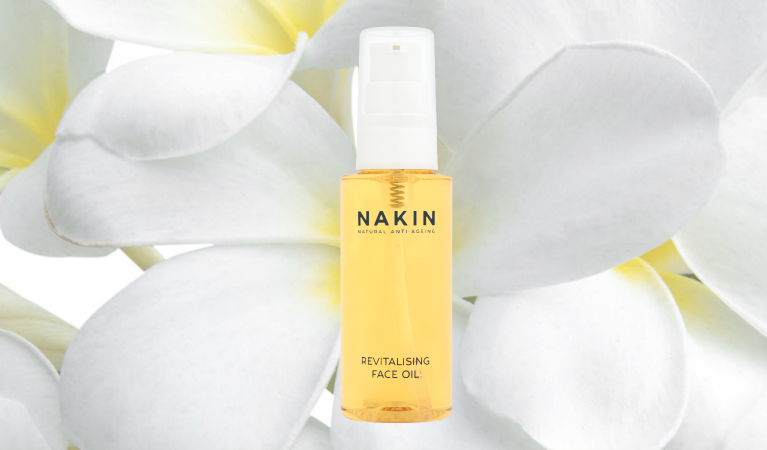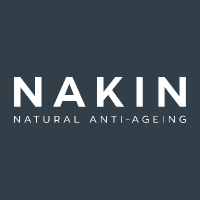How to Calm Facial Redness

There are many reasons why we might experience facial redness and some of these will be temporary and others more long lasting in nature. Redness from sun damage for example is usually temporary, whereas conditions such as rosacea are harder to treat. Whatever the cause of the redness on your face this can be helped with good natural skincare and a nourishing diet.
At Nakin we produce natural anti-ageing face products that are made to be kind to skin. This is in contrast to many skincare products that seem to have lots of aggravating ingredients in the formulas. such as retinol, glycolic acid and synthetic vitamin C. At Nakin we feel that these types of ingredients create barriers to calming facial redness, and can even be a cause of facial redness.
So, calming facial redness can in some instances happen quite easily - by only applying nourishing face products to skin, not applying any products with ingredients that are too strong for many complexions, protecting our skin against the elements such as wind, sun and cold, plus living a healthy lifestyle with a good diet.
How to Calm Facial Redness
There are many reasons why your face may be red. It could be due to weather conditions, a skin condition, or even just a coincidence of factors. Whatever the reason, there are ways to calm facial redness and bring your skin back to its normal state.
If your facial redness is more of a sudden symptom, such as from being hot or sunburnt then one way to calm facial redness is by using a cold compress. This can be done by taking a clean cloth and soaking it in cold water. Once the cloth is soaked, apply it to the affected area for a few minutes. The cold temperature will help to constrict blood vessels and reduce inflammation.
Another way to reduce facial redness is by using topical treatments. If you are prone to redness on the face then for everyday skincare needs, we always recommend using gentle face products such as Nakin’s Natural Range, as it is made without parabens, retinoids, synthetic vitamin C, artificial colour and fragrance.
How Skincare Can Calm Redness
If you have red, irritated skin, you are not alone. This is one of the common issues that dermatologists hear about, and many of us will experience some form of facial redness.
There are many causes of facial redness, from sun exposure and windburn to rosacea and acne. And while there is no one-size-fits-all solution our favourite product to calm facial redness is our Revitalising Face Oil. It is 100% natural and contains many ingredients that can help calm and soothe irritated skin. One such ingredient is jojoba oil. Jojoba has anti-inflammatory properties that can help reduce redness. It is also a natural moisturiser, which is great for dry and sensitive skin. Another ingredient that it contains is baobab oil which also has anti-inflammatory properties plus is a natural antioxidant, which can help protect the skin from damage caused by free radicals.
If you are looking for a natural way to calm and soothe your red, irritated skin, try our Natural Anti-Ageing Oil as it is formulated with a beautiful blend of ingredients to help reduce redness and inflammation.
Facial redness can often be attributed to skin sensitivity, irritation, or conditions such as rosacea. Incorporating a tailored skincare routine can effectively help to calm and reduce redness. Gentle cleansers that avoid harsh chemicals or artificial fragrances help maintain the skin's natural barrier without causing further irritation. You might like to try our Advanced Cleansing Milk which is an oil-based cleanser. Using our moisturisers with soothing ingredients such as hyaluronic acid, aloe vera and plant oils can hydrate and calm inflamed skin. Additionally, applying a broad-spectrum sunscreen daily protects sensitive skin from UV damage, which can exacerbate redness. Consistency and choosing products specifically formulated for sensitive skin are key to achieving a calmer, balanced complexion.
Creating a routine that includes kind and gentle ingredients is key, and take care with steps such as exfoliants that can aggravate the skin. Chemical exfoliants with high levels of ingredients like glycolic acid can effectively remove dead skin cells but might cause irritation. Physical exfoliants, such as scrubs or cleansing brushes, should be avoided as they can cause micro-tears in the skin and worsen redness.
In addition to skincare, making some lifestyle changes can also help reduce facial redness. Limiting alcohol consumption and spicy foods can minimise flushing and inflammation in people with rosacea. Managing stress levels through relaxation techniques like yoga or meditation can also help improve overall skin health. It is also important to avoid extreme temperatures and harsh environmental conditions, such as wind or extreme cold, as they can trigger facial redness.
How Diet Can Calm Redness
If you are one of the many people who suffer from facial redness, you know how frustrating it can be. You may feel like you have tried everything to get rid of it, but nothing seems to work. Luckily, as well as using topical treatments there is another easy method that may help, which is changing your diet to nourish skin internally.
There are certain foods that can trigger facial redness, so avoiding these may help lessen the problem. For example, spicy foods or those high in acidity can cause the blood vessels in your face to dilate, which leads to redness. Other common triggers include alcohol, processed foods, and sugar.
In addition to avoiding triggers, there are certain foods that may help calm facial redness. These include anti-inflammatory foods such as salmon, avocado, and green leafy vegetables. Omega-3 fatty acids, found in fish and certain plant oils, are also known to help reduce inflammation.
If you are struggling with facial redness, using nourishing face products and changing your diet may be the key to finding relief. However, if it continues to be a problem then talk to your doctor or dermatologist for expert medical advice.


Leave a comment